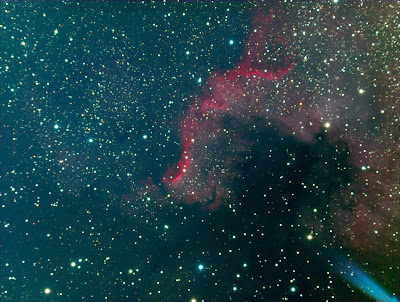This image is based on around 90mins of 114 s , gain 139, offset 21, exposures, all in luminance. Finally done some new flats, but moved the camera slightly when checking for dust, so still not the best.
 |
| NGC 672 in Triangulum |
Interesting galaxy, plus several small ones in the background.
Wikipedia: NGC 672 is a spiral galaxy in the northern constellation of Triangulum, positioned around 2° to the southwest of the star Alpha Trianguli.
This galaxy is located at a distance of approximately 23.4 megalight-years from the Milky Way,where it forms an interacting pair with the irregular galaxy IC 1727. In the neutral hydrogen radio band, a tidal bridge is observed between the galaxNGC 672 appears to be the more massive of the two, and hence IC 1727 shows more distortion from the interaction. Together they form members of a combined group of galaxies that includes NGC 784.
The morphological classification of NGC 672 is SB(s)cd, which indicates this is a barred spiral galaxy (SB), with no ring structure around the central bar (s), and moderately to loosely-wound spiral arms. In the visual spectrum, the galaxy appears symmetrical with clearly defined spiral arms.
















































